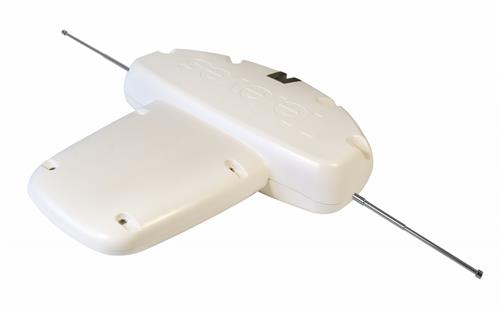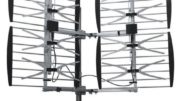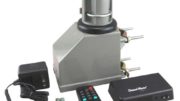I know what you’re thinking. Yeah you, the person who’s thinking about cutting the cord but hasn’t done it yet. You’re afraid there won’t be enough TV channels to make it worth your while. I used to think that when I joined the Solid Signal team nearly three years ago. When I dug deeper into the subject matter, I discovered just how much free TV is available. Since I used to share your concerns, I believe I could be the person to help you change your mind about cutting the cord.
TV Channels and Sub-Channels
Broadcast TV offers more channels than you might be aware of. Let’s start off with the main channels, which are your local ABC, CBS, NBC, FOX, and other affiliates. Most TV markets have a local carrier for each of these major networks with a channel number assigned to each. Each of these channels also has a number of sub-channels assigned to it. These stations could have anywhere from one to four or more sub-channels. This gives you more programming than you might realize.
Let’s take a look at the New York City TV marketing for example. The local ABC affiliate, WABC, can be found on channel 7. They also get two additional sub-channels there. On channel 7.2, viewers get the Live Well Network and channel 7.3 there’s Laff TV. It’s the same with New York’s NBC affiliate, WNBC, on channel 4. It comes with Cozi TV on sub-channel 4.2.
The New York City TV market has a total of 50 channels, each with a number of sub-channels. This makes for a huge amount of broadcast TV available in that market and all of it is 100% free. One thing to keep in mind: New York City is the biggest TV market in the country, so it has more channels and sub-channels that anywhere else in the U.S. This might have you wondering…
…“Is There Enough Free TV in Smaller Markets?”
That depends on how you define the word “enough.” Generally speaking, I’d say yes, nearly any cord-cutter can find plenty of TV to watch nearly anywhere in the country. Even if your area only has 10 high-powered TV stations, such as Paducah, KY, each of those will have a number of sub-channels. That makes for nearly 30 free TV stations to watch in that particular TV market. That’s not counting any low-powered stations that viewers there might be able to get.
One of the coolest things about cord-cutting is the possibility of getting channels from nearby TV markets. Some cord-cutters on the east coast do this because some markets there are within 50-80 miles of each other. For example, many cord-cutters in New York City can get stations from Hartford, CT and Providence, RI. So, if you don’t think there’s enough free TV where you live, you might be able to “borrow” some from the neighboring towns. Sometimes this requires getting a second antenna or a TV antenna rotator, but it can be done in some cases.
The “Secret” to Successful Cord-Cutting
Hint: It’s mostly about having the right type of antenna. To be fair, there are other factors, but those work off the base of having the right TV antenna. This is an area that often throws would-be cord-cutters because there’s so much to consider when getting an antenna. (I was just as confused as you might be on my first day here at Solid Signal.) Fortunately, I can cut your learning curve in half by sharing the things I’ve learned about the many different types of TV antennas.
Indoor TV Antennas
These are typically used by people who live in big cities where many TV transmitters are within about 10 miles or less. These antennas tend to be affordable and have many other great features and benefits. Perhaps the best thing about indoor antennas is that they’re small enough to be mounted inside your house instead of the roof. There are different types of indoor antennas including:
- UHF
- VHF
- UHF/VHF
- Amplified
- Non-amplified
Outdoor TV Antennas
These are for people who live more than 10 miles from the local TV transmitters. These are the antennas that are typically mounted atop a roof or attached to a chimney. There are three sizes of outdoor antenna, each generally corresponding with the distance of the viewer’s home to the transmitters. Short outdoor antennas have a 10-25 miles, medium-range antennas get signal from up to 45 miles, and long-range antennas capture signal at 45 miles or more. In addition to the size, there are other types of outdoor antennas, including:
- Omnidirectional
- Unidirectional
- Yagi
- Amplified
- Non-amplified
- VHF
- UHF
- UHF/VHF
- UHF/VHF/FM/HDFM
Wow! That’s a lot to digest. Well, guess what? There are even more things you need to know about in order to choose the antenna that’s best for you. When it comes to cutting the cord, you also need to know that:
There’s no such thing as a one-size-fits-all antenna. The one you need depends on how far you live from the local broadcast antennas and where those transmitters are located.
TV reception can be affected by trees, tall buildings, and other variables. These things have to be considered when choosing an antenna.
Your favorite TV channels. This is an important when choosing between a VHF, UHF, or VHF/UHF antenna.
By now you might be thinking, “I need to know all this just to get a TV antenna?” Even I have to admit that that’s a tall order for anyone who just wants to enjoy as much free TV that they can. Thankfully, there’s a much easier way for you to cut the cord…
… Call the Antenna Experts at Solid Signal
Since most people don’t have time to become a TV antenna expert, they call us. It’s quickest and easiest way to feel confident that you got the right antenna. You just call our antenna experts and answer a few questions. They’ll ask for your address then enter it into our database. This shows us how far you live from the local TV transmitters. Based upon this and other factors, we recommend the best TV antenna and other equipment you need to cut the cord.
If you’re ready to the cut the cord, or have questions about it, call Solid Signal at 888-233-7563. Since October 2002, we’ve helped hundreds of people cut the cord on cable TV. These folks enjoy a huge selection of free TV in their area and all of them have said that it’s more than enough.





